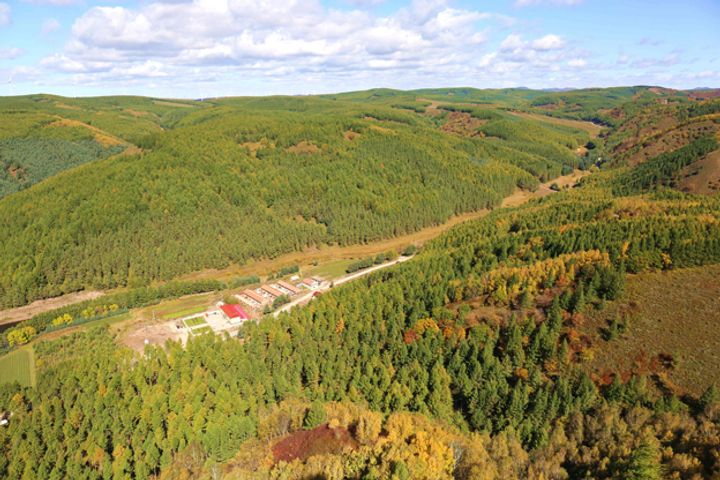 Saihanba National Forest Park Management Caps Admission to Protect Beijing From Sandstorms
Saihanba National Forest Park Management Caps Admission to Protect Beijing From Sandstorms(Yicai Global) Oct. 16 -- The management of Saihanba National Forest Park, a destination in North China's Hebei province that has become one of the most well-known eco-tourist resorts for those on holiday in Beijing, Tianjin and the surrounding areas, has capped admission in a bid to protect the nation's capital from sandstorms.
The first two characters of the park's name, sai and han, mean 'beautiful' in Mongolian, and ba is the Chinese word for 'tall mountain ridge.' The park is some 450 kilometers North of Beijing and several rivers originate there. The area serves as an important ecological barrier that shields Beijing, Tianjin and Tangshan from sandstorms.
The Chinese government built a large state-owned forest farm in Saihanba in the early 1960s to restore the local ecology and prevent soil erosion, in response to an increase in the frequency of sandstorms in the country's capital.
With ecological restoration efforts over the past five decades, forest coverage at the park has increased to 80 percent, effectively repelling southward invasions of Hanshadake Sandy Land. The frequency of sandy and dusty weather (measured by the number of days such weather occurs) in Beijing in spring has decreased by more than 70 percent since the introduction of the ecological rehabilitation program in Saihanba.
A forest tourist town with 118 hotels and restaurants offering some 11,000 beds has taken shape at the Saihanba Mechanical Forest Farm.
"The local forest tourism industry in Saihanba generated USD50.22 million (CNY330 million) in revenue last year, but the tourism industry must be developed within the carrying capacity of the forest farm, and the total number of tourists must be controlled," said Liu Haiying, the farm's party secretary and general manager.
The Saihanba National Forest Park can accommodate one million tourists a year without affecting its sustainability, and the park can easily increase its annual revenue by at least USD12.17 million (CNY80 million), but the management has limited annual tourist intake to 500,000. Tourist attractions make up 0.04 percent of the farm by area.
The provincial government has worked out plans for the Saihanba national forest park and natural reserve. Authorities are developing plans for the Saihanba area as well as sustainable development, eco-tourism and disaster prevention plans for Saihaiba and the surrounding regions.